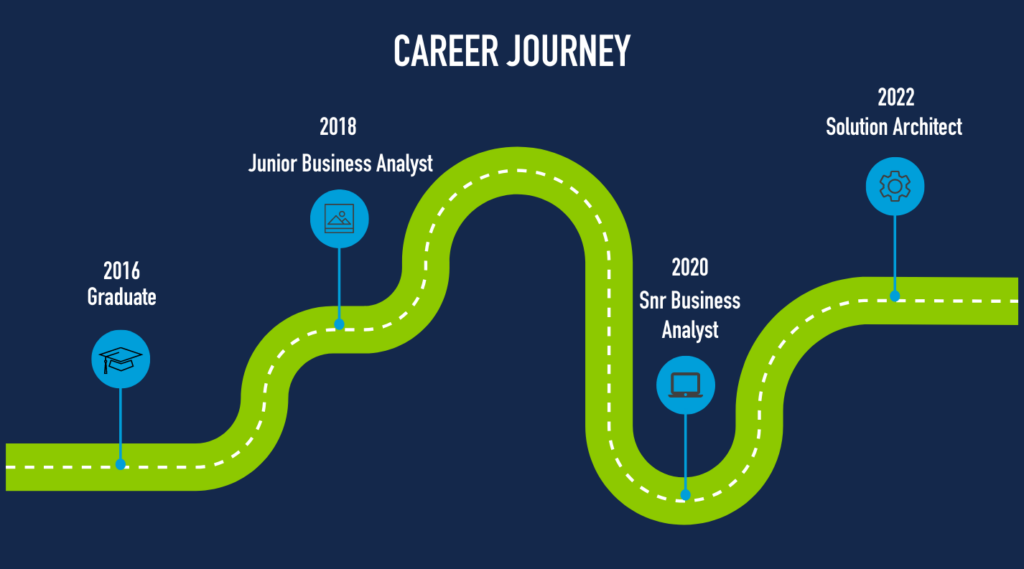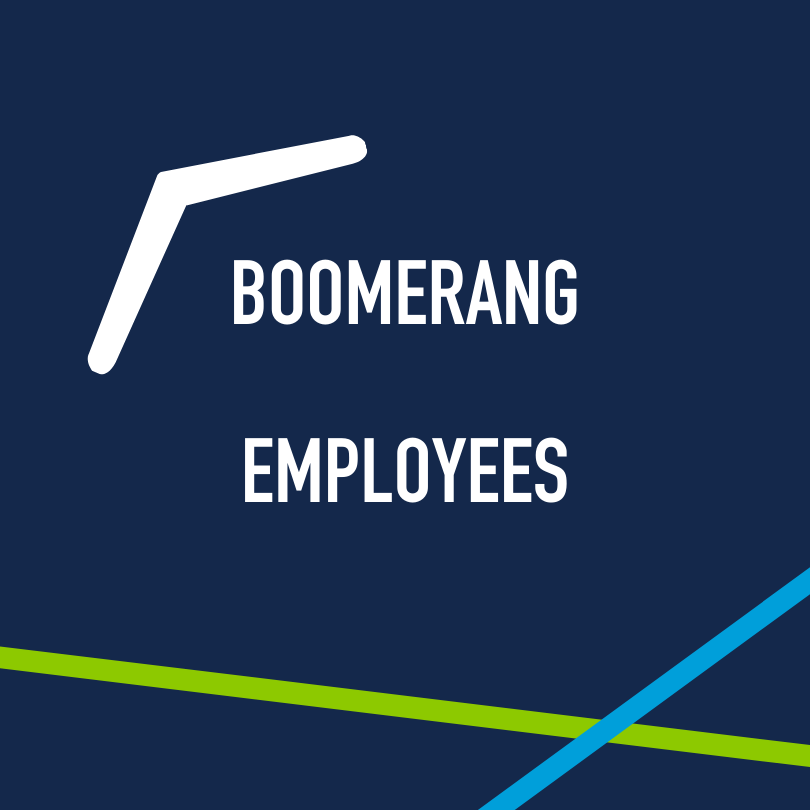The Great Resignation has quickly became a global phenomenon and the number of job openings across sectors are at an all-time high. As the demand for workers has increased, organisations are expanding their candidate search by looking at new geographies, considering workers who are changing careers, implementing new candidate attraction techniques and more.
Now we’re beginning to see an alternative talent pool come to the forefront—Boomerang employees, workers who have resigned from a company and only to rejoin later. Keep reading to learn more about boomerang employees; the benefits they can bring to your organisation; and how to go about attracting them back.
Boomerang Employees vs Permanent Alumni
It’s important to understand the key differentiators between boomerang employees from permanent alumni.
Permanent alumni will remain just that—permanently separated from an organisation. These individuals may have been successful at an organisation. However, at some point, they decided that the company was not the right fit for them any longer. This could be due to any number of work-related issues, like dissatisfaction with company culture or the need for a career change. The key factor in their reasoning for resigning an internal desire to leave.
On the other hand, boomerang employees are more likely to have left a company quickly. This is typically due to external factors, such as a sudden family emergency, a new child or an unexpected job offer that was too good to pass up.
In summary, permanent alumni choose to leave because they are unsatisfied with the company in some way. In contrast, because boomerang employees left due to external factors—which don’t reflect an issue with the organisation—they are more likely to consider re-joining.
There may be some individuals who leave because they’re unsatisfied in some way and are hoping the “grass will be greener” elsewhere. However, some find that isn’t the case and may be inclined to return to their previous employer with a newfound appreciation.
The pandemic reminded us how quickly life can change. Boomerang employees are a whole new pool of talent that could be the perfect fit for your organisation, regardless of whether they left to pursue other opportunities or for personal reasons. Many of these people could be on the job hunt again after a year or two, and your organisation could be the right choice again.
“I guess I’m an extreme example of a boomerang employee, being 12 years between engagements. I first worked for Springboard way back in 2008. My wife and I had just returned from living in England and had recently had our first child, and Springboard was a great chance for me to apply the budding skills I’d developed selling a recruitment solution in Europe. After 2 years I left to explore other roles in the industry, and spent the next 12 years building my knowledge and expertise at other SaaS providers.
A few months ago Springboard approached me about heading up their sales function, an opportunity I’d been searching for some time, and I was truly excited at the prospect of taking on the challenge and applying everything I’d learned since leaving the business many years ago. It’s been 3 months now and I’m absolutely loving it. The product is as rich and functional as I remember, and even more heartening a large number of my old colleagues are still here, a testament to how Springboard nurtures and treats their employees.
So yes, an extreme example of a Boomerang, but also a good case study in the benefits of keeping in contact with your alumni employees. I come back into the business knowing our product, our market and most importantly our customers and I’m looking forward to helping the business continue to grow and thrive.”
Chris Broadway, Technology Sales Manager
Springboard APAC
Hiring Boomerang Employees: What are the Benefits?
Here are some of the biggest benefits of rehiring former employees:
- Save Time Money & Time – Hiring a boomerang employee cuts down the hiring timeline and reduces your recruiting costs. Plus, because these employees have previously worked at your company, they require fewer onboarding resources and get up to speed faster.
- Second-Guessing Goes Away – When you hire a former employee, you already know how they fit in with the company and how they work with various people in the organization. This is a welcome contrast to hiring someone completely new.
- Bringing in a Fresh Perspective – By having the time to step away and see the organisation from the outside, boomerang employees are equipped with increased knowledge and experience to bring new ideas and insight into your organisation.
- Proof Behind Your EVP – Rehiring former employees shows that a company is willing to invest in their employees’ potential – even if they previously left on their own accord. Furthermore, current employees (who may be considering leaving themselves) can see that the company is worth coming back to, the ultimate vote of confidence in your Employer Value Proposition (EVP), which can lead to improved retention and employee satisfaction.
- Happier Employees – Returning to a previous employer with new skills and a fresh perspective can have its benefits for employees too—like higher pay, more growth opportunities and, in some cases, the ability to work from anywhere, which may not have been an option before. As a result, these returners will be pleased with their decision to return—leading to improved productivity for your organisation.
Prevent Boomeranging with an Internal Mobility Program
Talent Mobility has been a buzzword for many years now, but how many organisations have embraced this in a meaningful way? Few organisations can boast that they can fully support geographical, vertical, horizontal or cross functional moves with any degree of data-backed surety.
Research shows that employees who can’t visualise a career path in their company quickly become disenfranchised and look for advancement opportunities elsewhere. Nakisa.com research shows that 18% of employee who resign cite “Opportunities for Growth, achievement and security” as their reasons for leaving, the highest of any metric. One way to prevent employees from becoming a boomerang in the first place is to ensure they can see themselves progressing at your organisation—without having to go somewhere else to grow their skills and experience.
A robust mobility program must be more than just an internal jobs board, it must provide employees with a way of expressing their skills, characteristics, motivations and career goals in a way that’s engaging and meaningful. Simply searching employees resumes from when they applied to your organisation means you’re only looking at historical data and missing out on how they’ve developed and grown while working for you.
Technology can provide a platform that generates these conversations with employees about their hopes and expectations in their career, and provide robust, useable data to make better decisions and build succession plans for critical roles. It allows your organisation to become forward looking, to future proof your workforce and build a culture of transparency and growth, ultimately reducing that 18% and retaining good employees for the long term.

Discovery Steps Before Hiring a Boomerang Employee
Rehiring a former employee may not be the best option in every instance. Here are some questions to ask yourself to guide your decision:
- How much time has passed? Can they jump back in?
- Are they adaptable? Can they move the pace of today?
- Are they the best? Did this employee perform well in their previous tenure?
- Were they missed? Did their team enjoy working with them? Or will having them back bring up past tensions?
- Why do they want to return? Was there a reason to leave in the first place?
Keeping the Door Open for Boomerang Employees
While some employees may choose to reapply to your company in the future, many former employees may never consider re-joining or even know it’s an option without first hearing from a former colleague or manager. In this situation, what’s the best way to reach out to these former employees?
Here are four strategies for re-recruiting former employees:
- Skills Assessment & Visibility – As technology advances and becomes more capable of providing deeper insights into your employees and candidates, it can help inform your talent pool. Technology can help you identify the ideal traits and characteristics needed to be successful in a role. This data can spotlight untapped talent within your existing talent pool or employee alumni so you can reach out.
- Outreach from Existing Employees – Current employees are always a great source for recruiting. Let them know you’d like to consider a former employee for the role. If they’re still in touch, ask if they’d be willing to bring the idea up with the former colleague and encourage them to apply.
- Outreach Directly from the Manager – For a former employee, it can be extremely powerful to hear directly from a former leader that the employee is specifically wanted by the company and team. Plus, hearing directly from the manager means the former employee will likely take the offer more seriously.
- Employee Alumni Nurture Campaigns – If your company often has vacancies, such as employers engaged in high-volume hiring, a larger nurture campaign could be a great way to keep your connection. By maintaining a list of all high-performing employees who left in the last year, you can check in via your CRM to see where they are in their career now and whether they’d be interested in coming back to your company.
Boomerang Employee: Part of Larger Talent Acquisition Strategy
In order to tap into the boomerang talent pool, organisations must ensure that their company is one that people want to return to (or, ideally, one they won’t want to leave at all). By fostering an inclusive and empowering company culture, and focusing on mobility for all employees, your employees become brand advocates and can help attract new talent through referrals. When people feel valued, included and invested in, they’re less likely to leave your company for “greener pastures.” But, even when unpredictable external factors cause them to be pulled away, they’ll be happy to return when the time is right.




